Something went wrong!
Hang in there while we get back on track
Best attractions in Liguria
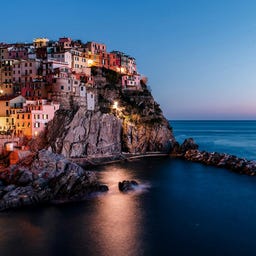
The Cinque Terre, a picturesque stretch of coastline along the Italian Riviera, comprises five unique villages carved into steep cliffs. Hiking trails link these colorful settlements, offering breathtaking views of the turquoise Mediterranean Sea and terraced vineyards. Each town has its own special charm and unforgettable vistas.

When visiting Genoa, be sure to explore the Strade Nuove and their Palazzi dei Rolli. These stunning Renaissance and Baroque palaces, once homes for nobles and state guests, showcase the immense wealth and power of the Genoese aristocracy.

Piazza De Ferrari is the vibrant heart of Genoa - a spacious, almost entirely traffic-free square that serves as the economic and cultural center of the city. The striking bronze fountain designed by architect Giuseppe Crosa di Vergagni and the magnificent architecture of the surrounding buildings, including Palazzo Ducale and Teatro Carlo Felice, have shaped the square's appearance since the 19th century.

In the Cinque Terre National Park on the Ligurian coast, you can expect a unique landscape where terraced slopes with traditional dry stone walls blend harmoniously with Mediterranean vegetation. Established in 1999, the park includes not only land areas but also a protected marine zone, offering various microclimates that host an astonishing diversity of plant and animal species.

Located in the Porto Antico area, the aquarium is a must-see in Genoa. With over 12,000 animals across 600 species, the aquarium showcases a spectacular array of marine life. You can marvel at sharks, turtles, penguins, and rare species like manatees in habitats that closely resemble their natural homes.

The majestic Cattedrale di San Lorenzo has shaped the skyline of Genoa since the 12th century and impresses with its characteristic black-and-white striped facade - a symbol of medieval nobility. In this stunning church, which combines various architectural styles from Romanesque to Gothic to Renaissance, you can admire not only valuable art treasures but also a curious war relic: an unexploded bomb from World War II. The 60-meter-high bell tower is one of the tallest in Liguria, while inside, Gothic columns, baroque decorations, and significant frescoes like the "Last Supper" by Lazzaro Tavarone testify to the cathedral's rich history.

In the largest maritime museum in the Mediterranean, you can experience the maritime history of Genoa up close - from historical documents signed by Christopher Columbus to a lifelike replica of a Genoese galley. The museum, which opened in 2004, is located in the historic Galata district, where a significant Genoese community lived and warships were built until the 15th century.

In the mighty Palazzo Ducale, the former seat of the Doges of the Republic of Genoa, 700 years of vibrant history merge into a unique architectural ensemble. The palace, which began construction in the late 13th century, was named in 1339 with the election of the first Doge, Simone Boccanegra, and was rebuilt in neoclassical style after a devastating fire in 1777.

The Basilica della Santissima Annunziata del Vastato is considered one of the most important churches of Mannerism and Early Baroque in Genoa, and was praised by Montesquieu in the 18th century as the most beautiful church in the city.

Hidden in an idyllic bay of the Portofino Natural Park, you will find the Abbazia di San Fruttuoso, a fascinating Benedictine monastery from the 9th century, accessible only by boat or hiking trail. The complex, renovated by Adelaide of Burgundy in the 10th century, impresses with its Byzantine dome, octagonal bell tower, and two Romanesque cloisters that house the graves of the Doria family.
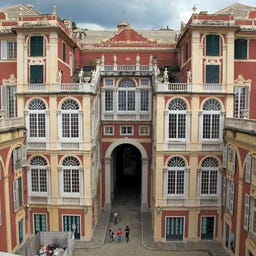
In the magnificent Palazzo Reale, you will experience one of the best-preserved Baroque palaces in Genoa, which has been a UNESCO World Heritage Site since 2006. Built by the Balbi family between 1643 and 1650, the palace was expanded under the Durazzos in the 17th century and later served as the royal residence of the Savoy family.
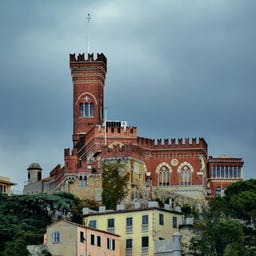
High above Genoa stands the Castello d'Albertis, a neo-Gothic castle from the 19th century that offers you a breathtaking view of the city and the Ligurian Sea. The sailor Enrico Alberto d'Albertis had it built in 1886 on the remains of a 14th-century fortress and filled it with his collections from around the world.
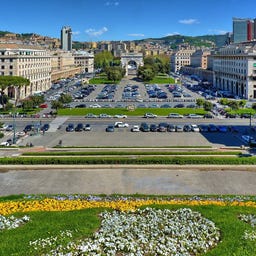
The Piazza della Vittoria is one of the largest squares in Genoa, featuring elegant travertine facades designed by architect Marcello Piacentini in the 1930s. At its center stands the impressive Arco della Vittoria, a monument dedicated to the fallen of World War I.
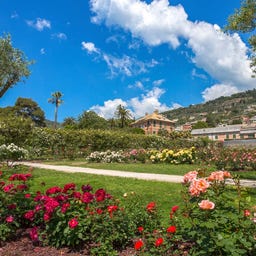
In the historic Parchi di Nervi, you'll find an expansive botanical garden covering 92,000 m², stretching between the Via Aurelia and the sea.
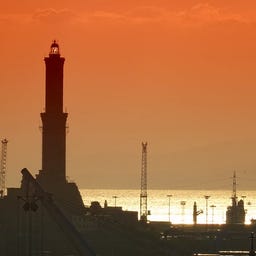
As a prominent landmark, the Lanterna di Genova has overlooked the port of Genoa since the 12th century. Standing at 77 meters, it is the tallest lighthouse in Italy and the Mediterranean. This third-oldest active lighthouse in the world was rebuilt in its current form in 1543 and has withstood numerous historical storms, including wars and French bombings in the 17th century.
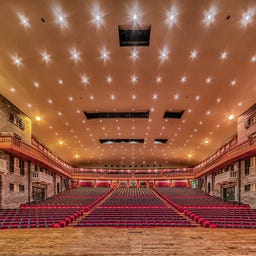
The Teatro Carlo Felice is Genoa's most important opera house and one of the most significant in Italy, located right at the central Piazza De Ferrari. Originally designed in 1828 by Carlo Barabino, the neoclassical building was heavily damaged during World War II and reopened in 1991 with state-of-the-art technology and a distinctive light cone above the foyer.
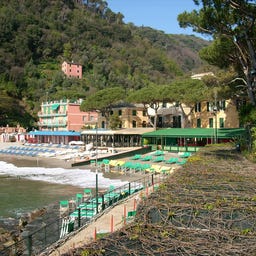

In this nearly 9-hectare historical park from the 19th century, you can expect a fascinating blend of romantic garden art and architectural elements like a neoclassical Temple of Diana, a pagoda, and an Egyptian obelisk.
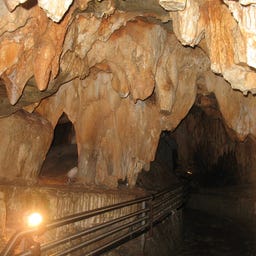
In the caves of Grotte di Toirano, you will find a fascinating underground system with impressive stalactite formations and significant archaeological discoveries. On the 1300-meter circular path through the Bàsura and Santa Lucia Inferiore caves, you will not only discover sparkling aragonite crystals and coral-white walls but also traces of human activity from 12,000 years ago.
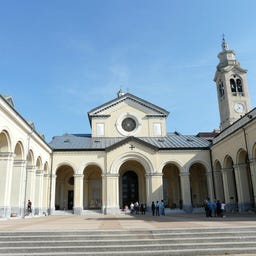
High above Genoa stands the most important Marian shrine in Liguria, the Santuario di Nostra Signora della Guardia, whose history dates back to a Marian apparition in 1490. The current basilica, completed in 1890, impresses with its three-nave architecture and stunning frescoes, including the dome paintings by Pasquale Arzuffi featuring Mary and the patron saints of the Republic of Genoa.
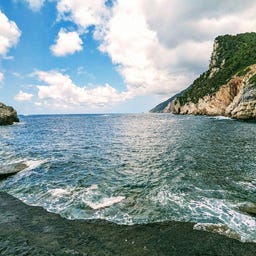
In the Parco Naturale Regionale di Porto Venere, a UNESCO World Heritage site on the Ligurian coast, you can expect a unique blend of protected nature and historical architecture. The expansive protected area includes the picturesque town of Portovenere, as well as the three nearby islands Palmaria, Tino, and Tinetto, covering more than 130 square kilometers of marine area.
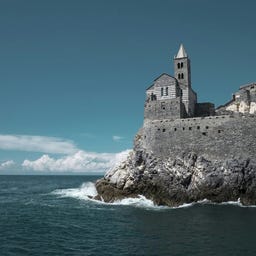
High above the harbor of Portovenere, the Chiesa di San Pietro stands as one of the oldest churches in the Gulf of La Spezia. Built in the 5th century on the remains of a pagan temple, the church today combines Romanesque and Gothic architectural elements, with its striking black-and-white striped façade in the Genoese style particularly catching the eye.
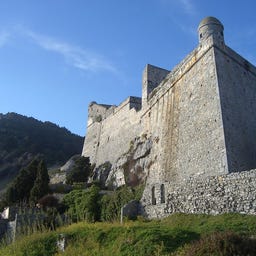
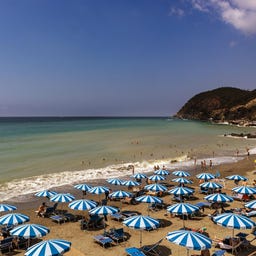
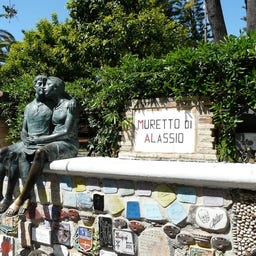
On the beachfront promenade of Alassio, you'll find the Muretto degli artisti, a unique wall adorned with around 1,000 beautifully designed ceramic tiles. The story of this special attraction began in 1953 when Ernest Hemingway and Mario Berrino came up with the idea of immortalizing the signatures of famous personalities on tiles at the Caffè Roma.
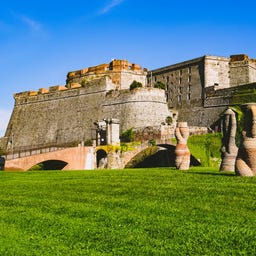
Majestically, the Fortezza del Priamar overlooks the harbor of Savona and continues to shape the skyline of this Ligurian port city. Built by the Genoese between 1542 and 1750, this fortress was designed to control Savona and later served as a military prison, where the Italian freedom fighter Giuseppe Mazzini was held in 1830/31.
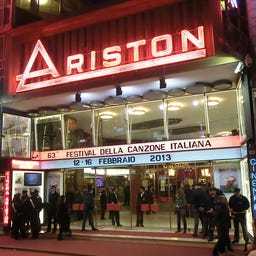
The Teatro Ariston in Sanremo is one of the most famous cinema theaters in Italy and has been the home of the legendary Festival di Sanremo, Italy's most important music competition, since 1977.
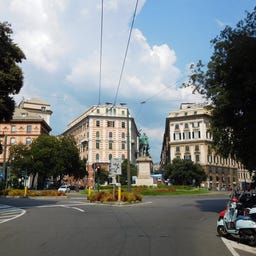
Piazza Corvetto is one of the largest and most elegant squares in Genoa, just a few minutes' walk from Piazza De Ferrari. Named after the Napoleonic politician Luigi Emanuele Corvetto, the square is dominated by an impressive equestrian statue of Vittorio Emanuele II and is lined with well-maintained gardens that lead to the nearby Acquasola Park and Villetta di Negro.
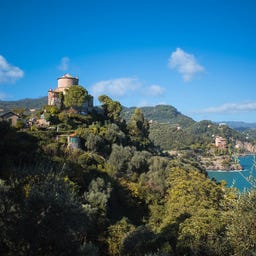
High above the picturesque harbor town of Portofino stands Castello Brown, a former fortress from the 15th century with a strategic view over the Gulf of Tigullio. Originally known as Fortezza di San Giorgio, the structure served the Republic of Genoa for centuries as a military outpost against pirate attacks and was reinforced multiple times.
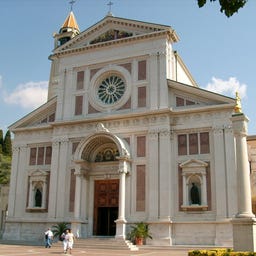
High above the Ligurian coastal town of Arenzano stands the Santuario del Bambino Gesù di Praga, the first sanctuary in Italy dedicated to the Child Jesus of Prague. Built by the Discalced Carmelites in the early 20th century, this sacred building impresses with its striking facade made of multicolored marble and a gilded statue of the Child Jesus on a tall column. Inside, you will find intricately designed ceramics by Angelo Biancini, numerous votive offerings, and an impressive nativity scene made of majolica in a grotto beneath the sanctuary. From the hilltop, you can enjoy a wide panoramic view of the surroundings, while the church, expanded in 1966, remains an important pilgrimage site on the Riviera di Ponente.
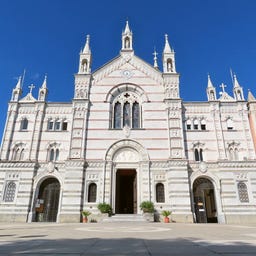
High above Rapallo, at 612 meters, stands the Santuario di Nostra Signora di Montallegro, one of the most important Marian shrines in Liguria. This pilgrimage site, built in the 16th century after a Marian apparition and elevated to basilica status in 1942, impresses with its neobaroque architecture featuring a marble façade and houses a precious Byzantine icon of the Assumption of Mary.
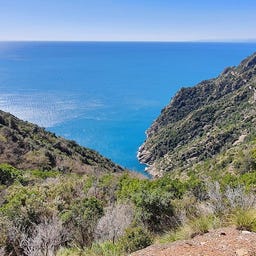
In the Portofino Regional Natural Park, about 30 kilometers east of Genoa, you will find a unique nature reserve that spans 18 square kilometers of land and 13 square kilometers of sea.
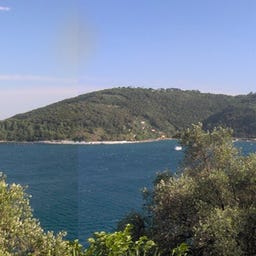
On the picturesque coast of Liguria, you will find Palmaria, the largest island of the Spezzino archipelago, which, along with Portovenere and the Cinque Terre, is a UNESCO World Heritage site.
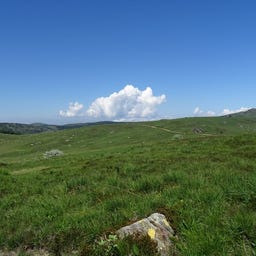
In the protected Parco naturale regionale del Beigua, you will find an impressive natural landscape of metamorphic rock formations and steep cliffs, stretching over nearly 9,000 hectares. As a UNESCO Global Geopark, the area offers not only geological wonders but also prehistoric rock carvings at Alpicella and a diverse wildlife, including Italian wolves and golden eagles.
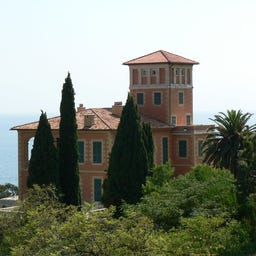
On the Ligurian coast near the French border, the Giardini botanici Hanbury stretch over 18 hectares - one of the most significant acclimatization gardens in Europe. The English tea merchant Sir Thomas Hanbury established the garden in 1867 in the English landscape style, featuring winding paths and pergolas that offer you spectacular views of the Mediterranean.
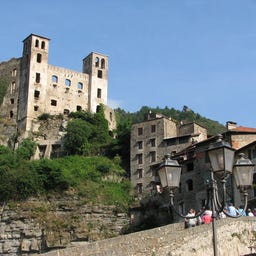
High above the picturesque village of Dolceacqua stands the Castello dei Doria, an impressive fortress from the 12th century that you can visit today as a municipal museum. The distinctive round tower dates back to the time of its founding, while the two square towers and the bastion were added in the 16th century under Stefano Doria.
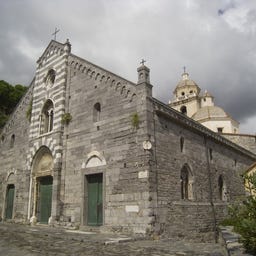
High above the picturesque Portovenere stands the Santuario della Madonna Bianca, an originally Romanesque church from the early 12th century that was rebuilt in the Gothic style after several destructions.
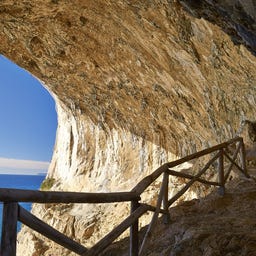
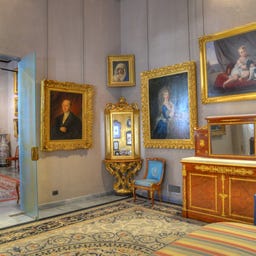
In the impressive Palazzo Rosso, built between 1671 and 1677 by Pietro Antonio Corradi for the Brignole-Sale family, you will find one of the most significant art collections in Genoa. This characteristic red palace has been a UNESCO World Heritage site since 2006 and features magnificent frescoes by notable 17th-century artists such as Domenico Piola and Gregorio De Ferrari.
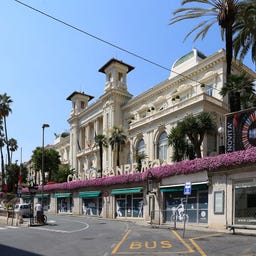
In a magnificent Art Nouveau building designed by the French architect Eugène Ferret, you will find one of only four legal casinos in Italy. Opened in 1905 as the Kursal, this venue has a rich history, from its closure during World War II to becoming the birthplace of the famous Festival di Sanremo, which took place here from 1951 to 1976.
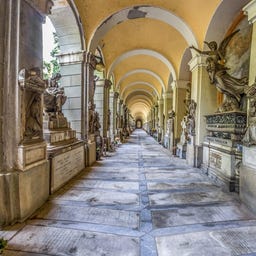
On a hill in the Val Bisagno valley stands the Cimitero Monumentale di Staglieno, the largest cemetery in Genoa and one of the most significant monumental cemeteries in Europe. Opened in 1851, this 33-hectare site impresses with its variety of tomb monuments and sculptures in different styles, ranging from Neo-Gothic to Art Nouveau.
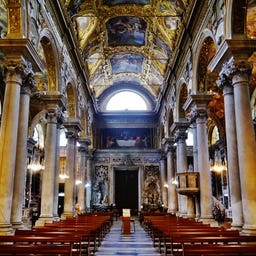
In the Basilica di Santa Maria delle Vigne, one of the oldest Catholic churches in Genoa, you will encounter a fascinating blend of Romanesque, Baroque, and Neoclassical architecture. Originally built as a chapel dedicated to Mary in the 6th century, the structure was expanded into a church around the year 1000 and was granted the status of basilica minor by Pope John Paul II in 1983.
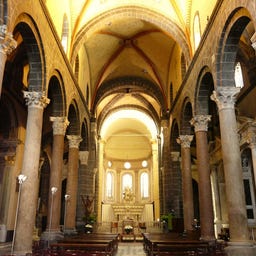
On the hill of Castello, where ancient Genoa once emerged, stands one of the oldest Christian sites in the city. The Chiesa di Santa Maria di Castello impresses with its Romanesque architecture featuring three naves and a façade adorned with a Roman architrave from the 3rd century, showcasing griffin representations.
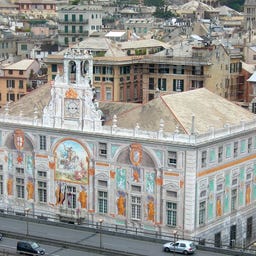
The impressive Palazzo San Giorgio at the old port of Genoa combines medieval Gothic with Renaissance architecture, reflecting the former power of the maritime republic. Built in the 13th century as the seat of secular authority, the palace gained particular fame as the prison of the explorer Marco Polo and later as the headquarters of the influential Bank of San Giorgio.
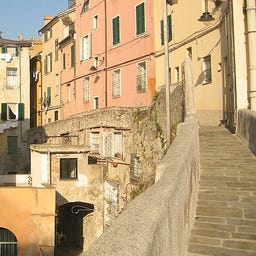
The impressive city walls of Genoa, the Mura di Genova, are a testament to over 2000 years of vibrant city history and still stretch for 4.5 kilometers today. From the 7th century BC to the 16th century, a total of seven different fortifications were built, showcasing architectural styles ranging from Greek to medieval to Baroque. The last and largest expansion, the Mura Nuove, was constructed between 1626 and 1639, extending the defensive structure to nearly 20 kilometers.

In the magnificent Villa del Principe, built in the 16th century as the residence of Admiral Andrea Doria, you will find one of the most significant historical buildings in Genoa.
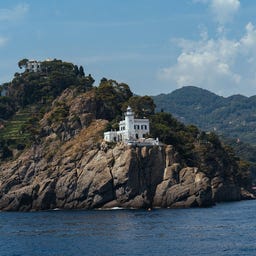
The 12-meter-high lighthouse Faro di Portofino has been overlooking the Italian coastal town of the same name since 1870 and is now part of the Portofino Marine Protected Area. Its distinctive white flashing light, which shines every five seconds, can be seen from 16 nautical miles away. The pyramid-shaped tower is connected to a two-story former lighthouse keeper's house, where the "Fanalisti" served until 1987. Today, the lighthouse is fully automated and operated by the Italian Navy, and it is not accessible to visitors.
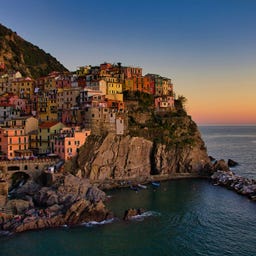
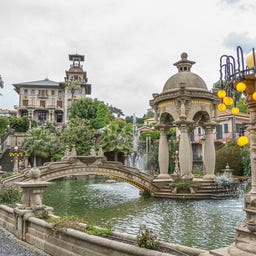
In the Italian city of Imperia, you will find the fascinating Villa Grock, a property built in 1927 according to the vision of the world-famous clown Charles Adrien Wettach, known as Grock. The villa combines Art Deco with Eastern influences and impresses with its expansive park filled with circus and esoteric symbolism, complete with a picturesque pond featuring a gloriette and a small bridge.
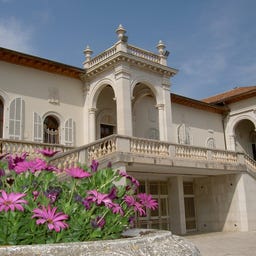
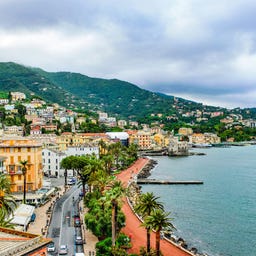
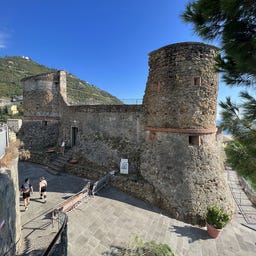
High above the picturesque village of Riomaggiore stands an impressive fortress from the 13th century, built by the Marchesi Turcotti as a defensive structure. The distinctive castle, with its two massive round towers, took on its current square shape due to expansions by the Republic of Genoa in the 15th and 16th centuries. During the Napoleonic era, the fortress was briefly used as a cemetery before it was meticulously restored at the end of the 20th century.
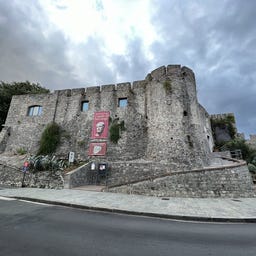
High above La Spezia stands the Castello San Giorgio, an impressive fortress from the 13th century, originally built by Nicolò Fieschi. After several destructions and reconstructions, the castle took on its characteristic square shape with polygonal bastions in the 17th century, which you can still admire today.
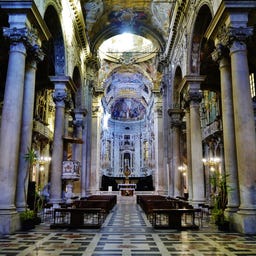
In the Basilica di San Siro, you encounter one of the oldest places of worship in Genoa, which dates back to the 4th century and once served as the city's first cathedral. After a devastating fire in the 16th century, the church was rebuilt in a Baroque style, with the elegant neoclassical facade by Carlo Barabino added in the 19th century.
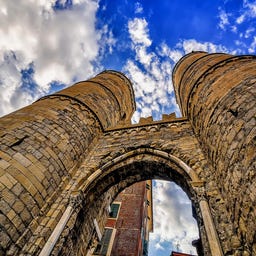
The powerful Porta Soprana is one of the most significant medieval stone structures in Genoa and has stood since the 12th century as a former city gate overlooking the old town. With its distinctive twin towers and Latin inscriptions from 1155 celebrating Genoa's victories in the Mediterranean, it was once the most important gate leading to Rome.
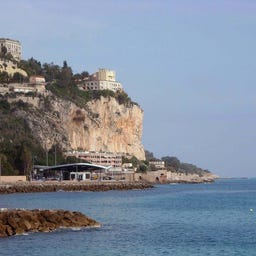
At the Italian-French border near Ventimiglia, you will find the Balzi Rossi - the "Red Rocks" - one of the most significant archaeological sites in Europe. In the approximately 15 caves and rock shelters, numerous remains of early humans have been discovered since the 19th century, including both Homo sapiens and Neanderthals.
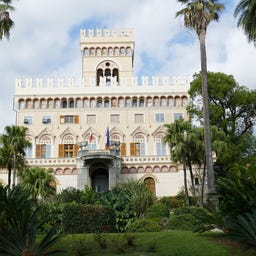
In the picturesque park of Arenzano, you will find the Villa Negrotto Cambiaso, which has evolved from a medieval watchtower into a castle-like estate. Originally built by Marquis Tobia Pallavicino in the 16th century, the villa was transformed into an impressive castle with a 26-meter-high tower by architect Luigi Rovelli at the end of the 19th century, its battlements adorned with 144 family crests of the Pallavicini.
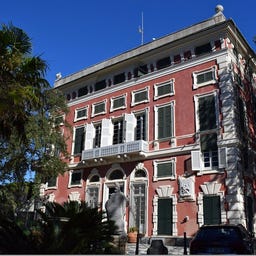
In the picturesque coastal town of Santa Margherita Ligure, you will find the Villa Durazzo-Centurione, an impressive complex of two historic noble residences set in an Italian park garden. The villa, built on the remains of a Roman site from the 3rd century, underwent its most significant transformation in 1678 by the architect Galeazzo Alessi and now features magnificent rooms like the "Salone degli Stucchi" with its Louis XVI chandelier. In the richly decorated halls, you can admire paintings and frescoes by notable artists such as Domenico Piola and Giovanni Andrea De Ferrari from the 17th and 18th centuries, while the "Camera Umbertina" remains just as it was during the visit of Queen Margherita of Savoy in 1904. Today, the municipal villa serves as a cultural center and museum, where you can also explore the artistic museum "Vittorio Giovanni Rossi."
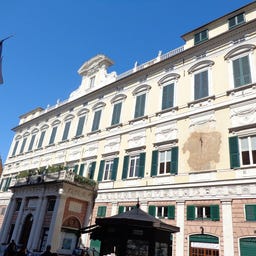
In the heart of Genoa, you will find the Palazzo della Meridiana, an impressive city palace from the 16th century, built by Gerolamo Grimaldi Oliva between 1536 and 1544. This magnificent structure, now part of the UNESCO World Heritage site "Le Strade Nuove," captivates with its artistic frescoes on the northern facade depicting the "Labors of Hercules."
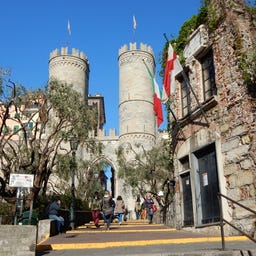
In this simple house near the Porta Soprana, Christopher Columbus spent his youth between 1455 and 1470 before becoming one of the most famous navigators in history. The current building is an 18th-century reconstruction, as the original structure was heavily damaged during a French bombardment in 1684.
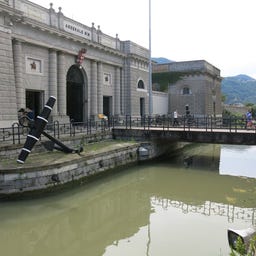
At Italy's most important maritime museum, located right at the main entrance of the military arsenal in La Spezia, you will find an impressive collection of maritime history. The museum's origins date back to the 16th century when the Dukes of Savoy established their first naval base in Villefranche-sur-Mer.
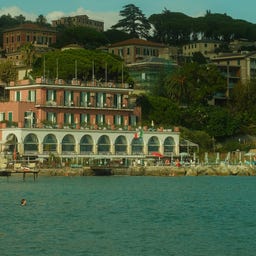
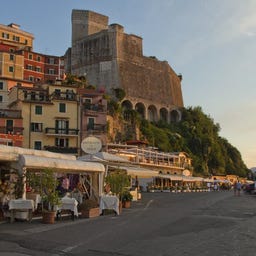
Majestically, the Castello di Lerici sits on a rocky spur overlooking the bay of the same name and is one of the most significant fortifications in Liguria. Built in the 12th century by the Republic of Genoa, the structure impresses with its pentagonal shape and massive defensive walls that blend harmoniously into the coastal landscape.
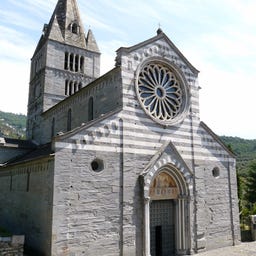
In the picturesque village of San Salvatore stands the Basilica dei Fieschi, an impressive example of Romanesque-Gothic architecture from the 13th century. The church, built by Pope Innocenzo IV. in 1244, captivates with its distinctive façade made of slate and white marble, as well as its three-nave interior featuring ornate stone columns.
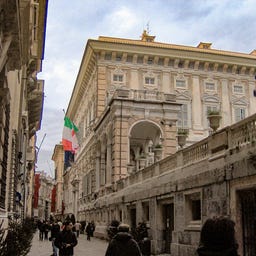
In the impressive Palazzo Doria-Tursi, one of the most magnificent UNESCO World Heritage palaces on Via Garibaldi, you will find a unique blend of historic town hall and museum. Built in the 16th century for the banker Niccolò Grimaldi, the palace features the longest facade on the street, adorned with pink stone, black slate, and white Carrara marble.

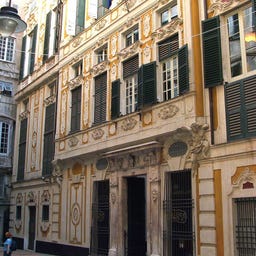
In the magnificent Palazzo Spinola di Pellicceria, you can embark on an authentic journey back to the golden age of Genoese noble palaces in the 16th century. Originally built by Francesco Grimaldi, this palace is part of the famous Palazzi dei Rolli, which hosted high-ranking state guests during the Republic of Genoa and are now a UNESCO World Heritage site.

In the heart of Genoa stands the magnificent Chiesa del Gesù e dei Santi Ambrogio e Andrea, whose history dates back to the 6th century and has been cared for by Jesuits since the 16th century. Designed by Giuseppe Valeriano, the church is notable for its five domes and houses significant Baroque artworks, including paintings by Peter Paul Rubens and frescoes by the brothers Giovanni Battista and Giovanni Carlone.
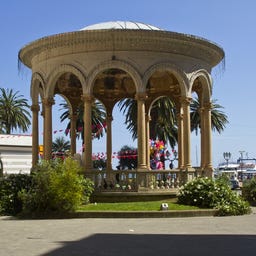
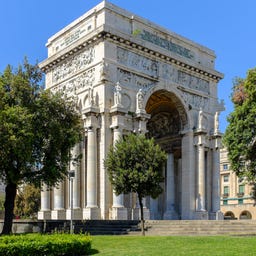
The impressive Arco della Vittoria in Genoa rises 27 meters high and was inaugurated in 1931 as a monument to the fallen soldiers of World War I. Designed by Marcello Piacentini, this triumphal arch combines Roman imperial architecture with design elements from the 16th century and is supported by twelve columns with Doric capitals.
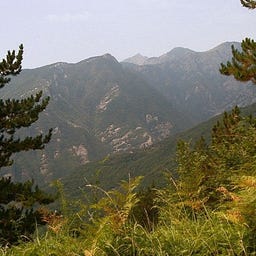
The Alpi Liguri form the southernmost extension of the Western Alps, where you will find the highest peak of the region, Punta Marguareis, at 2,651 meters. In this area, which was already inhabited by the ancient Ligurians and later became the scene of Napoleon's Italian campaigns, you can now discover a versatile outdoor paradise.

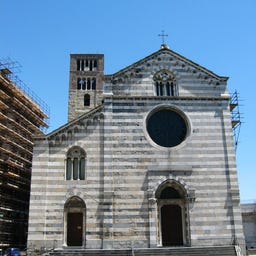
High above the bustling Via XX Settembre stands the Chiesa di Santo Stefano, one of the most significant churches in Genoa, with a history dating back to 972.
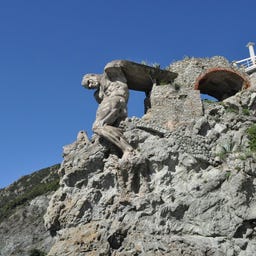
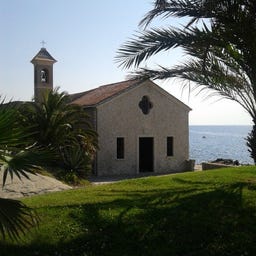
At the top of Capo Sant'Ampelio in Bordighera stands the eponymous Romanesque church, which dates back to the 11th century. According to legend, the Egyptian hermit Sant'Ampelio lived here in a cave as early as 411, and he is venerated as the patron saint of blacksmiths, having brought the first date palms to Bordighera.
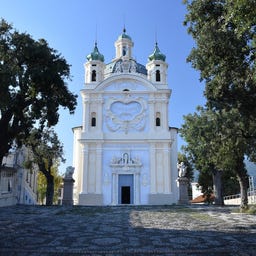
High above the historic Pigna district of Sanremo stands the Santuario della Madonna della Costa, an impressive Baroque sanctuary from the 17th century. The history of this pilgrimage site dates back to the 14th century, with the first written mention occurring in 1474.
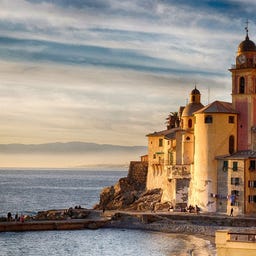
On a small rocky island in front of the harbor of Camogli stands the Basilica di Santa Maria Assunta, whose history dates back to the 12th century. The church, extensively renovated in the 16th and early 19th centuries, impresses with its baroque interior featuring three naves, valuable gilded decorations, and colorful marble work. Notable highlights include the frescoes by Nicolò Barabino and Francesco Semino from the late 19th century, as well as the wooden statue of the Assumption of Mary by Francesco Maria Schiaffino at the main altar. In 1988, the church was elevated to a minor basilica by Pope John Paul II.
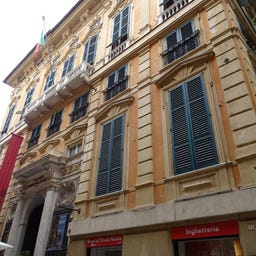
In the magnificent Palazzo Bianco, built between 1530 and 1540 for Luca Grimaldi, you will find one of the most significant art collections in Genoa. As part of the UNESCO-protected Palazzi dei Rolli, the palace now houses an impressive gallery of European paintings from the 16th to 18th centuries, including masterpieces by Caravaggio, Rubens, and van Dyck.
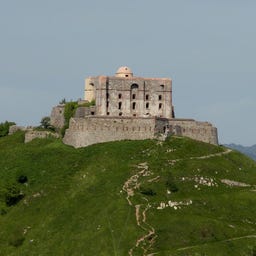
High above Genoa stands the Forte Diamante, an impressive fortress from the 18th century, built under the direction of engineer Jules Robert de Cotte between 1756 and 1758.
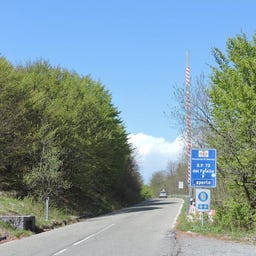
Located at an altitude of 1,044 meters, the Passo del Faiallo is one of the most impressive mountain passes in Liguria, offering you spectacular views of the Genoese coast on clear days. The pass, whose name comes from the Latin word for "beech," was once part of important salt trade routes and became the site of historical battles during the Napoleonic siege of Genoa in 1800.
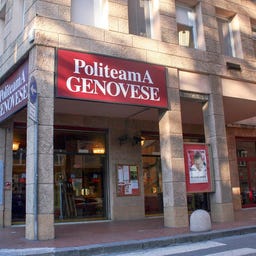
In the heart of Genoa, near the Villetta Di Negro Park, you will find the historic Politeama Genovese - a theater with a history dating back to 1825. What started as a wooden "Teatro Diurno" evolved through several renovations into a modern theater with over 1,000 seats.
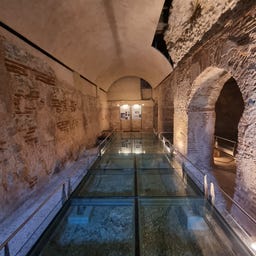
In the sheltered bay of Varignano Vecchio near Portovenere, you can discover the remains of a Roman luxury villa from the 1st century BC, which the writer Varro described as the "perfect villa."
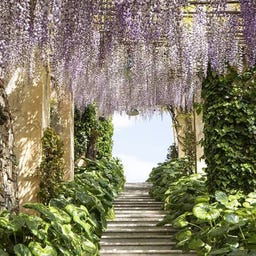
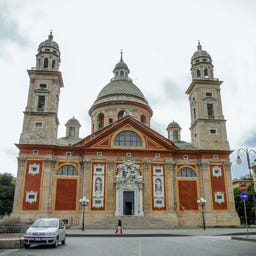
The majestic Basilica di Santa Maria Assunta in Genoa is one of the most significant Renaissance buildings in the city, designed by architect Galeazzo Alessi after the model of St. Peter's Basilica. Construction began in 1552, and its striking Greek cross layout and central dome impress with a bright interior featuring white walls and magnificent Baroque statues by Pierre Puget and Filippo Parodi.
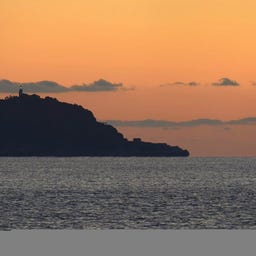
The small island Isola del Tino is located just 2.5 km off the Ligurian coast and is mostly a military restricted area today. In the 7th century, the hermit San Venerio lived on this densely forested island, later becoming the patron saint of the Gulf of La Spezia. His feast day on September 13 is the only day of the year when visitors are allowed to enter the island.
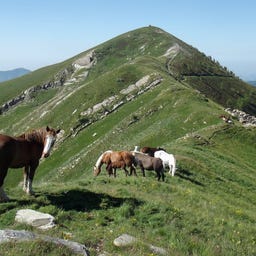
In the Parco naturale regionale delle Alpi Liguri, a nature reserve established in 2007 on the Italian-French border, you can explore over 6,000 hectares of a unique blend of alpine forests and mountain landscapes. This protected area, consisting of four non-contiguous zones, spans seven municipalities in the Liguria region, including Triora and Pigna.
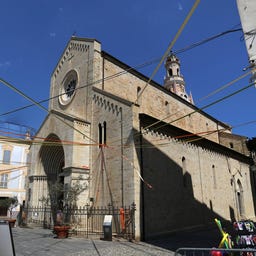
The Concattedrale di San Siro is the oldest religious building in Sanremo and one of the most significant examples of Romanesque architecture in Western Liguria. The first church on this site was built as early as 811, where Saint Siro of Genoa is said to have celebrated Mass. The current structure dates back to the early 12th century and has a tumultuous history, including attacks by Turkish corsairs and English bombardments.
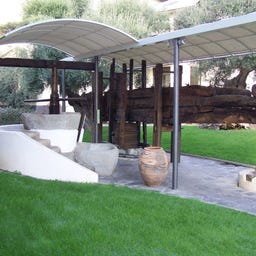
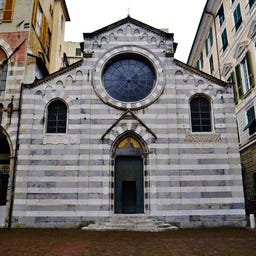
In the medieval Piazza San Matteo, you discover one of the best-preserved Gothic ensembles in Genoa: the Chiesa di San Matteo, founded in 1125 by Martino Doria as a family church and rebuilt in the Gothic style in 1278. The characteristic black-and-white striped marble facade with its large rose window still defines the church's appearance today, which continues to serve as an abbey for the influential Doria family.
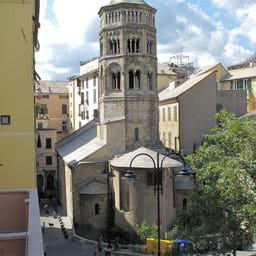
The Chiesa di San Donato is one of the most significant Romanesque churches in Genoa and has been standing in the historic center of the city since the early 12th century. With its simple limestone facade, distinctive octagonal bell tower, and three-nave interior, it offers an authentic glimpse into medieval sacred architecture.
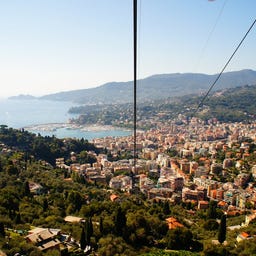
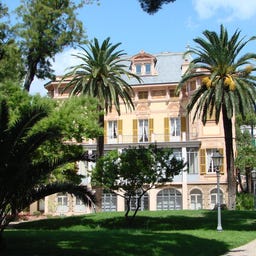
In the picturesque coastal town of Sanremo, you'll find the Villa Nobel, an eccentric property in neo-Moorish style from the late 19th century. Originally built in 1871, the villa was purchased by Alfred Nobel in 1891, where he lived and worked until his death in 1896. After extensive renovations, which included adding an extra floor and a mansard roof, the historic building has housed the Nobel Museum since 2002.
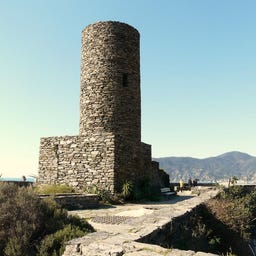
High above the picturesque coastal town, the Castello di Vernazza stands on a 70-meter-high rocky outcrop - a medieval fortress with parts dating back to the 11th century. The distinctive round tower in the center of the irregularly built complex was restored in the 20th century and reflects the castle's tumultuous history, having been controlled over the centuries by bishops, marquises, and the Republic of Genoa.
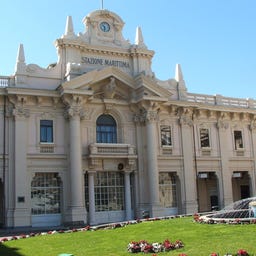
The impressive Stazione Marittima at the historic port of Genoa was not only the gateway to the New World for countless emigrants in the 19th century, but it remains the city's most important cruise terminal to this day. The complex, built in several stages between 1884 and 1930, consists of three interconnected areas that were once strictly separated by passenger class.
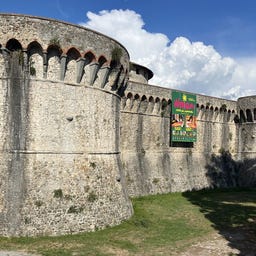
The powerful Fortezza Firmafede has been overlooking the historic center of Sarzana since the 13th century and has a rich history. After its destruction by the Florentines, Lorenzo de' Medici had it rebuilt at the end of the 15th century as an impressive fortress with a keep, defensive walls, and a deep moat.
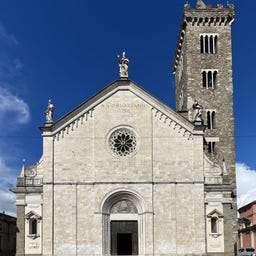
In the medieval old town of Sarzana stands the Concattedrale di Santa Maria Assunta, an impressive blend of Romanesque, Gothic, and Baroque architecture. Originally dedicated to Saint Basil, the church was completed in the 14th century and houses the "Croce di Mastro Guglielmo" from 1138, the oldest painted cross in Italy.

The striking Castello di Rapallo stands right by the sea and was built within just one year as a defensive structure after a devastating attack by the Turkish pirate Dragut in 1549.
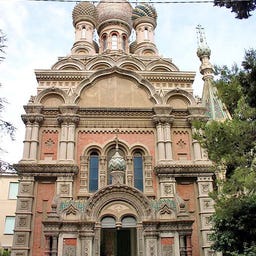
The Chiesa di Cristo Salvatore in Sanremo is a testament to the significant Russian community that settled in the Ligurian coastal town in the early 20th century. The Orthodox church, built in the neo-Byzantine style, was completed in 1913 according to the plans of the Russian architect Aleksej Scusev and is located near the historic Passeggiata Imperatrice.
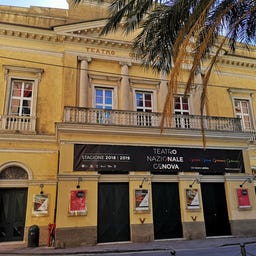
In the elegant district of Sampierdarena, you will discover the Teatro Gustavo Modena, a classic Italian theater from the 19th century, impressive with its neoclassical facade and Ionic columns. Opened in 1857, this building has a rich history - from a celebrated opera house to a cinema, and now it serves as part of the Teatro Nazionale di Genova. In the horseshoe-shaped auditorium with three tiers, which now accommodates 498 visitors, you can still admire the magnificent (partially reproduced) ceiling frescoes by the artist Nicolò Barabino.
